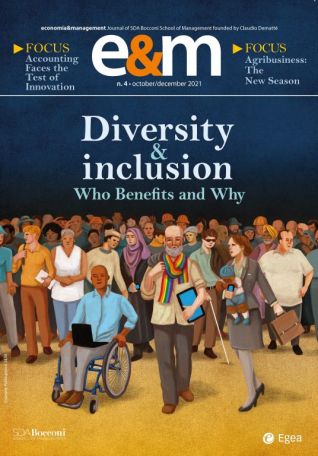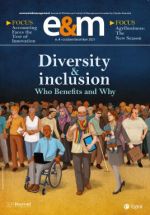E&M
2021/4
It’s Decision Time on Migrants
The increase of the migrant population in Italy directly affects businesses for three reasons: the demographic aging of our country demands a generational change in many key occupations in our economy; participation in the labor market represents the most efficient vehicle for social integration; and making the most of the value of migrant human resources guarantees advantages for competitiveness and better performance in companies.#In making the best use of the migrant labor force, a paradigm shift seems pressing today: from a hyper-adaptable and cheap reserve of labor, to a responsibly inclusive and also performative management, that exploits skills and diversity.#There are multiple advantages for companies linked to inclusion and training of migrants: from recruiting already-qualified workers or those who can in any event be useful for the skills sought and/or the need to replace senior resources on their way out and include motivated young workers, with an above-average propensity for engagement, to the possibility of benefitting from specific language and cultural skills that are essential in the context of strategies of competitive (re)positioning in business environments that are increasingly interconnected at the global level.



